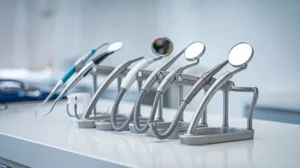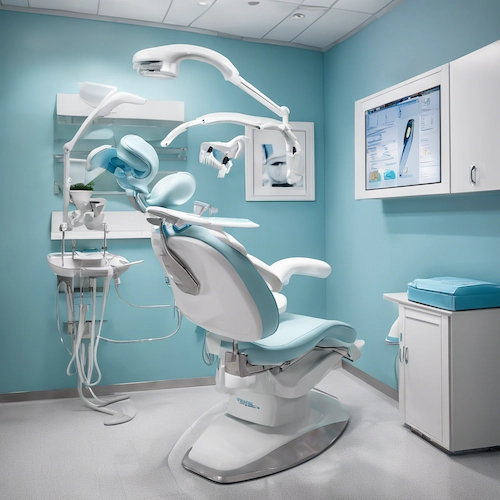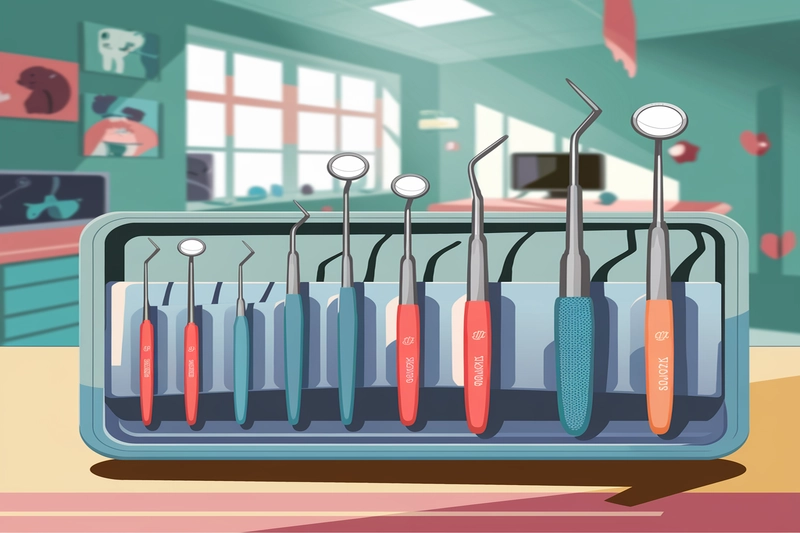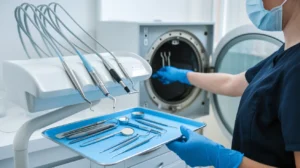
How to Choose the Best Dental Mouth Mirror for Oral Care
Picking the right dental mouth mirror might seem like a small task, but it’s actually pretty important for keeping your teeth and gums healthy. With so many options out there,

In our practice, we prioritize creating an environment where children feel safe and comfortable. Research indicates that 92.2% of children can develop a positive perception of dental treatment when properly managed. We’ve found that younger children tend to show more negative perceptions than older ones, which is why we emphasize the importance of early positive experiences.
To enhance comfort levels, we encourage parents to be present during procedures, as their presence helps build confidence and ease anxieties. We’ve also noticed that incorporating playful elements and using positive reinforcement significantly improves the child’s attitude toward dental procedures.
In our experience as pediatric dental professionals, we’ve observed that managing a child’s psychological state is crucial before introducing pediatric extraction dental forceps. Studies show that approximately 20% of school-aged children experience fear of dental procedures.
We’ve found that dental anxiety in children often stems from multiple sources:
We’ve discovered that the Tell-Show-Do method is particularly effective when introducing pediatric dental extraction forceps. This approach involves explaining procedures in child-friendly terms, demonstrating on models, and then proceeding with the actual treatment. For instance, we often refer to our instruments using friendly terminology – calling the dentist’s mirror a “special mirror” or “little mirror”.
In our practice, we prioritize creating an environment where children feel safe and comfortable. Research indicates that 92.2% of children can develop a positive perception of dental treatment when properly managed. We’ve found that younger children tend to show more negative perceptions than older ones, which is why we emphasize the importance of early positive experiences.
To enhance comfort levels, we encourage parents to be present during procedures, as their presence helps build confidence and ease anxieties. We’ve also noticed that incorporating playful elements and using positive reinforcement significantly improves the child’s attitude toward dental procedures.

We’ve witnessed remarkable advances in pediatric extraction dental forceps over recent years, transforming how we approach children’s tooth extractions. Let’s explore these innovations that are making our young patients’ experiences more comfortable and efficient.
We’re seeing revolutionary changes in forceps design, with manufacturers now incorporating advanced materials like titanium-niobium blends that offer superior strength while remaining lightweight. One of our favorite innovations is the DLC (Diamond-Like Carbon) coating technology, which enhances grip and precision during extractions. These modern forceps feature beveled and serrated beaks that provide better tooth and root surface contact.
In our practice, we’ve embraced the latest technological integrations in pediatric dental forceps. Some models now include:
We’ve found that comfort-focused improvements have revolutionized pediatric extractions. The latest designs include reduced dimensions that allow us to easily conceal the instruments in our palms, helping minimize anxiety in young patients. Rainbow-colored forceps have proven particularly effective in creating a more positive experience.
The ergonomic advances are equally impressive, with handles featuring contoured grips and textured surfaces that reduce hand fatigue during procedures 7. We’ve noticed that these new designs require less force during extractions, significantly reducing the risk of tissue damage and broken crowns.
These innovations align perfectly with our goal of providing precise, minimally invasive extractions while maintaining a child-friendly environment. The combination of advanced materials, smart technology, and thoughtful design has truly transformed our approach to pediatric dental extractions.
In our pediatric dental practice, we’ve learned that successful tooth extractions require tailoring our approach to each child’s developmental stage. Let’s explore the most effective techniques we use across different age groups.
When working with toddlers, we’ve found that extraction timing is crucial. Studies show that primary teeth extractions account for 53% of dental procedures in young children. We prioritize using specialized pediatric extraction forceps with short beaks that adapt well to primary teeth. Our experience shows that maintaining space after early extractions is vital, as premature loss of baby teeth can lead to misalignment issues affecting speech and facial development.
For school-age patients, we focus on precision and efficiency. Our data shows that using physics forceps significantly reduces extraction time to 11.85 seconds compared to 77.88 seconds with conventional forceps. We’ve developed a comprehensive approach that includes:

Working with adolescents presents unique challenges, particularly with wisdom teeth extractions. We typically recommend extraction between ages 18-24 to prevent impaction and overcrowding. Our approach combines modern forceps technology with strategic extraction planning. For orthodontic cases, we often focus on premolar extractions to create optimal space for alignment.
We’ve found that using rainbow-colored forceps helps reduce anxiety across all age groups , while maintaining professional efficiency. Our practice emphasizes the importance of proper forceps selection – using precision-designed instruments that create less trauma and reduce the risk of complications.
Our commitment to minimizing trauma during pediatric tooth extractions has led us to develop comprehensive strategies that prioritize gentle techniques and effective pain management. We’ve found that painless dental treatment sessions significantly reduce pre-existing anxiety and increase treatment adherence.
We’ve embraced the atraumatic extraction technique, which has shown remarkable success in our practice. Using this method, we can complete extractions within seconds without causing pain. For particularly anxious children, we utilize computer-controlled delivery systems that have demonstrated less pain during injection and reduced postoperative discomfort.
In our practice, we implement a multi-faceted approach to pain management:
We’ve developed a comprehensive post-extraction care protocol that significantly reduces complications. Our data shows that proper aftercare should begin with maintaining gauze pressure for 30-45 minutes post-extraction. We recommend applying cold compresses for 20 minutes on and 20 minutes off during the first 24 hours to manage swelling.
For optimal healing, we advise parents to ensure their children avoid strenuous activities for at least 48 hours post-extraction. We’ve found that maintaining proper hydration and following a soft diet for the first couple of days significantly improves recovery outcomes.
Through our experience with pediatric extraction dental forceps, we’ve noticed that children who receive proper post-operative care typically experience complete healing within 7–10 days for simple extractions, while surgical extractions may require up to three weeks.
Pediatric dental extractions require a delicate balance of technical expertise, psychological understanding, and proper tool selection. Our experience shows that success comes from combining modern forceps innovations with child-focused approaches tailored to each age group.
We’ve seen remarkable improvements in patient outcomes when using advanced forceps designs alongside proper psychological preparation. Studies confirm that children respond positively to our gentle extraction methods, especially when we pair them with appropriate pain management strategies.
The future of pediatric dental extractions looks promising, with new technologies making procedures faster, safer, and more comfortable for young patients. Remember that each child presents unique challenges, making it essential to adapt our approach while maintaining consistent care standards.
Most importantly, our commitment to minimizing trauma through proper technique and post-procedure care helps create positive dental experiences that benefit children throughout their lives. These early positive interactions build trust and confidence, setting the foundation for lifelong dental health.

Picking the right dental mouth mirror might seem like a small task, but it’s actually pretty important for keeping your teeth and gums healthy. With so many options out there,

Dental mirrors have come a long way. From simple reflective tools to sophisticated gadgets, they play a key role in modern dentistry. With constant innovation in dental mirrors, these aren’t

Hey there, dental pros! Today, we’re diving into something super important but often overlooked—how to properly mouth mirror sterilization. If you’re in the dental field, you know these little tools
At The Surgical Kit, we are committed to providing healthcare professionals with the finest tools to ensure precision and safety in every procedure.